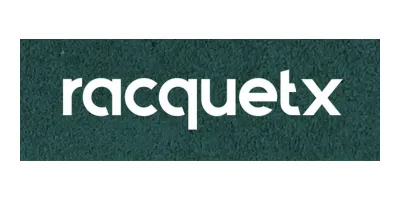"What is Synthetic Ice", an interview with Marc Bjerring from Glice

Welcome to today’s interview where we delve into the fascinating world of synthetic ice with a leading expert in the field, Marc Bjerring, from Glice.
In this interview, we will explore the fundamentals of synthetic ice and its numerous advantages, as well as gain insights into the advanced technology and manufacturing processes behind this innovative skating surface. With Marc’s extensive knowledge and expertise, we’ll gain a deeper understanding of what synthetic ice is, how it compares to real ice, and the wide range of applications it offers.
If you are planning to build a synthetic ice skating rink, try our ice rink cost calculator to get a customized cost estimate for your project.
So let’s dive straight in!
Sports Venue Calculator (SVC): Today, we have the pleasure of speaking with an expert in the field of synthetic ice, Mr. Marc Bjerring (MB).
Marc, could you enlighten our readers on what exactly synthetic ice is?
MB: Certainly! Synthetic ice, also known as fake ice rink material, artificial ice, pretend ice, or imitation ice, is a remarkable alternative to traditional ice surfaces used for skating. It is a specially engineered material that mimics the smoothness and glide of real ice, providing skaters with a similar experience without the need for refrigeration or the maintenance associated with natural ice.
SVC: Fascinating! So, what makes synthetic ice so unique and sought after?
MB: Synthetic ice has come a long way in terms of technological advancements. The latest products on the market, such as Glice Synthetic Ice, offer an exceptional skating experience that rivals real ice. These surfaces feature advanced materials and manufacturing techniques that provide a smooth and seamless glide, making it difficult to distinguish from natural ice.
Additionally, the versatility of synthetic ice is a major draw. It can be installed both indoors and outdoors, making it accessible to a wide range of users, from professional skaters to recreational enthusiasts. The convenience and cost-effectiveness of synthetic ice have made it a popular choice for resorts, entertainment venues, municipalities, and even individuals who wish to have a personal skating rink at home.

SVC: Marc, could you provide our readers with some insights into what artificial ice is made of?
MB: Certainly! Synthetic ice is made from a specially engineered high-density polymer, specifically polyethylene plastic, which is renowned for its durability and ice-like properties. This material is carefully molded into interlocking tiles that form the synthetic ice surface. To ensure a smooth and gliding experience, different types of lubricants are incorporated into the material. These lubricants can either be applied as a spray onto the surface or mixed directly into the polymer during the manufacturing process.
SVC: So, can you address the common question of whether synthetic ice melts?
MB: Synthetic ice is made from engineered plastics, hence it does not melt like electricity-powered conventional ice. The superior plastics used in manufacturing Glice synthetic ice are specifically designed to withstand various environmental conditions, including temperature changes in any environment. Therefore, there is no need to worry about the surface melting when investing in a synthetic ice rink. This makes it a reliable and low-maintenance alternative to traditional ice surfaces.
SVC: Now, let’s delve into the manufacturing process of synthetic ice.
Can you shed some light on how it is produced?
MB: Certainly! Synthetic ice manufacturers typically employ one of two processes to transform plastic polymer into skating material: extrusion and sintering.
Extrusion involves pushing melted plastic through a nozzle and allowing it to cool. However, this process can be challenging to control, leading to inconsistencies in the finished surface. On the other hand, sintering involves crushing plastic pellets under high pressure and controlled heat. This meticulous process ensures that lubricants are evenly mixed throughout the material, resulting in a perfectly smooth and level surface for skating.

SVC: I’d like to explore further why the sintering process is considered superior.
Can you explain why it is the preferred choice at Glice?
MB: Absolutely! In our opinion, the sintering process is far superior when it comes to manufacturing synthetic ice, which is why we exclusively use it at Glice. While it may be a more costly technique, the benefits it offers make it the preferred choice.
One of the key advantages of sintering is the strength of the final product and the ultra-smooth surface it achieves. The controlled heat and even pressure during the sintering process result in a surface that provides an exceptional glide experience. Lubricant pellets can be added into the polymer and mixed uniformly, ensuring a superior glide compared to the extrusion process. In contrast, extrusion does not allow for the consistent distribution of lubricants, resulting in patchy surfaces and less cohesion during skating.
It’s important to note that only a handful of artificial ice manufacturers in the world employ the sintering process, and Glice is proud to be one of them. Our state-of-the-art manufacturing facility is unparalleled, providing a highly controlled environment that maintains ideal temperature, humidity, and cleanliness. This meticulous attention to detail allows us to produce the finest synthetic ice rinks available worldwide.
Due to the unbeatable finish and performance of our synthetic rinks, they have become the number one choice for several Hockey Elite Training Centers, including CCM’s own test facility. Additionally, our synthetic rink at Zócalo in Mexico City is the largest of its kind in the world, further highlighting the quality and reputation of Glice synthetic ice.
SVC: These are some excellent points, Marc. Let’s dive deeper into the durability of synthetic ice.
Can you elaborate on how durable Glice synthetic ice is compared to other options on the market?
MB: Absolutely. When it comes to artificial ice, the range of qualities available in the market can be vast. It’s crucial for potential buyers to do their research and understand what they are investing in. The quality of synthetic ice can directly impact its longevity and performance.
At Glice, we prioritize quality and durability. Our synthetic ice sheets are engineered to withstand the test of time. The durability depends on various factors such as the manufacturing process, the connection system, and the thickness of the sheets. Our sheets undergo the superior sintering process, ensuring maximum strength and a perfectly flat surface. Additionally, our connection system is the best in the industry, ensuring a secure and seamless rink installation.
In fact, our commercial synthetic sheets are so durable that several car manufacturers (such as BMW, Land Rover, etc…) use our synthetic ice to test their cars’ performance on ice. ! We believe that investing in high-quality synthetic ice upfront eliminates the need for multiple rink purchases in the future, providing a long-lasting and cost-effective solution for skaters.
SVC: That’s truly impressive, Marc. Now, let’s discuss the skating experience on synthetic ice.
How does it compare to real ice, and what makes Glice synthetic ice stand out in terms of glide and performance?
MB: Skating on high-quality artificial ice is a remarkable experience. While it may feel slightly different from real ice initially, skaters quickly adapt and enjoy the unique benefits it offers. At Glice, we have dedicated years to scientific research and testing to create the most superior product that closely mimics the glide of real ice.
One key advantage of Glice synthetic ice is that our sheets are designed to release lubricants from within the material as you skate, providing a consistently smooth glide. The lubricants are deeply and evenly embedded within each sheet, and as your blades cut into the surface, they are released, enhancing your skating experience.
After skating, you may notice fine, light scratches on the surface of Glice synthetic ice. These scratches are intentional and part of our unique design. They help improve the surface with each use and release the embedded lubricants, resulting in a smoother glide over time. It’s an innovative process that we have perfected through extensive research and development.

SVC: Lastly, let’s explore the benefits of synthetic ice.
How does it compare to traditional ice in terms of convenience, cost-effectiveness, and performance advantages?
MB: Synthetic ice offers a multitude of benefits that save skaters both time and money. One of the primary advantages is the ability to skate year-round, regardless of the weather. With your own synthetic ice rink, you have the freedom to practice and enjoy skating whenever you want. This provides a competitive edge and eliminates the need to travel to rental facilities or pay hourly fees.
We often refer to Glice’s synthetic ice as Eco Ice, as we’re proud to be a carbon neutral and environmentally friendly company. Many customers and companies love the fact that we plant one tree per panel produced, and have partnerships in place with various environmental and humanitarian agencies such as Eden Reforestation Proejct, and Habitat for Humanity.
Having a synthetic ice rink at home also eliminates downtime during practice, as there is no waiting for a Zamboni to resurface the ice. Additionally, you can say goodbye to the expenses associated with special equipment, high electricity bills, coolants, and loud compressors. There’s no need to rely on cold weather or waste water. While skate sharpening may be required more frequently, your expensive boots and blades will be kept dry, preventing rusting and damage.
In summary, synthetic ice offers the convenience of year-round skating, cost savings, and the ability to maintain high-quality ice conditions without the traditional challenges associated with real ice. It provides skaters with an exceptional experience and a hassle-free solution for practicing and enjoying the sport they love.
SVC: Thank you, Marc. It’s clear that synthetic ice offers a wide range of possibilities for skaters.
Can you elaborate on the different activities and sports that can be enjoyed on synthetic ice?
MB: Artificial ice is incredibly versatile and suitable for various activities. Common uses include hockey and goaltending training, figure skating practice, leisure skating, and even sports like Eisstock curling. You can essentially do everything on artificial ice that you can do on real ice.
However, we do discourage toe-pick jumping in figure skating on synthetic ice. The toe picks can dig into the plastic and cause deep dings, making repairs challenging. Other than that, the possibilities are limitless, allowing skaters to enjoy the same range of movements and maneuvers as on real ice.

SVC: That’s fantastic to hear. Now, let’s shift our focus to the installation and design process.
Could you explain the steps involved in setting up a synthetic ice rink?
MB: The installation of a synthetic ice rink is relatively straightforward. Start with a flat surface and place the synthetic sheets in their designated positions. The sheets are assembled using a connection system, and it’s essential to choose a product with a tight tongue-and-groove system, like the one Glice offers. This ensures a secure fit and prevents lifting or shifting during use.
It’s important to note that the design of connectors varies among manufacturers, and this can significantly impact the skating experience. Glice’s tongue-and-groove and Smart Lock system not only enhance safety but also provide a seamless skating experience. The tight connection minimizes grooves, preventing dirt and debris from accumulating between the panels.
SVC: Maintenance is a crucial aspect of any skating surface.
Could you explain the general maintenance requirements for synthetic ice rinks?
MB: While maintenance guidelines may vary slightly depending on the specific product, the overall requirements for artificial ice rinks are generally the same. Regular vacuuming helps to keep the surface clean and free of debris. Occasional mopping and conditioning of the surface help maintain its glide properties. Additionally, power washing the rink once a year helps to refresh and deep clean the surface.
It’s important to familiarize yourself with the specific maintenance procedures recommended for your chosen synthetic ice product. By following the manufacturer’s guidelines, you can ensure the longevity and optimal performance of your rink.
SVC: That’s valuable information, Marc. Finally, let’s discuss the size and customization options for synthetic ice rinks.
Can you tell us more about the available rink sizes and the flexibility in designing a rink?
MB: Synthetic ice rinks can be customized to fit a range of sizes and spaces. A few sheets are sufficient for beginners or goaltenders, with dimensions of approximately 13×9 feet. If you have the yard space, you can even create your own NHL-sized hockey rink, complete with ice markings and dasher boards.
For instance, the Glice rink in Zócalo, Mexico City, holds the distinction of being the largest synthetic ice rink in the world, spanning an impressive 43,000 square feet. The size and shape of the rink are entirely up to the individual’s preferences and available space.
SVC: Thank you for your time today, Marc. We appreciate all the insights and the comprehensive information that you have provided us about artificial ice. It’s clear that synthetic ice opens up a world of possibilities for skaters, allowing them to enjoy their favorite activities regardless of the weather or location.
Conclusion
In conclusion, synthetic ice provides skaters with the opportunity to skate year-round, with the added benefits of convenience, cost savings, and customization. Whether it’s for personal use, training facilities, or entertainment venues, synthetic ice continues to revolutionize the skating experience. With Glice’s commitment to innovation and quality, skaters can enjoy a smooth glide and unleash their skills on a surface that comes close to the real thing.
If you are planning to install a synthetic ice rink, try our ice rink cost calculator to get a customized cost estimate for your project.
We have also written about grants and funding opportunities for such installation projects, take a look!











